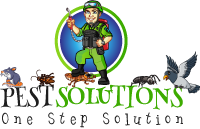Houseflies are found almost everywhere people live. They lay their eggs on animal feces, garbage, and in rotting organic material. In many cases, housefly infestations are often just a nuisance. However, houseflies can also carry viruses and bacteria that can spread when they bite. Houseflies may cause food poisoning, cholera, typhoid fever, eye infection, and much more disease.
How Do I Control House Flies?
House Fly Control requires knowledge of breeding locations and larval development activities. The professionals at PEST SOLUTIONS BRIGHTCLEANSE PVT. LTD. are well trained to identify these locations and know exactly what fly control treatments to use to help eradicate these pests.
Sanitation: By ensuring everything is clean is one of the methods which will help to reduce the flies
Exclusion: We need to eliminate any of the ways that flies are entering your property therefore they are excluded from entering your home as well.
Chemical Control: When it becomes harder to control house flies from the above methods, we need to opt for chemical control in which pesticide can be used releasing fly strips in small unoccupied rooms and attics. Spraying a residual insecticide around doors, windows, screens, or any other potential points.
Mechanical Control: This includes anything that kills or captures flies without the use of chemicals. Fly swatters can be used to deal with small flies. UV Light traps work well but they must be placed properly. It needs to be put no more than 5ft off the ground and away from any competing light sources and food preparation areas. Sticky fly papers with odor attract will trap flies.

PREVENTION :
Identification: The different types of flies may look similar, but they require different control methods. It is important to identify the places where the flies have been depositing their eggs. It may be something simple like an uncovered trash can or a bowl of food.
Sanitation: The most important factor to manage all flies is sanitation. Eliminating fly-breeding sites, i.e. the material to which they are attracted and on which they lay eggs, is usually sufficient to eliminate and prevent fly infestations. Conversely, without thorough sanitation, other control methods are largely ineffective. Therefore, trash should be kept in sealed containers. Also, eliminate areas of excessive moisture.
Inspection: Just as sanitation is important for successful fly management, inspection is the key to sanitation. To eliminate fly breeding sites, one must first locate the attracting material. Often this can only be accomplished by conducting a thorough inspection of the premises, and by knowing what to look for and where to look. Inspect for material that attracts that species and then eliminate the material.
Exclusion: Another important step in fly management is to exclude them from the premises. This is done by keeping doors, windows and vents closed, as much as practical, and by screening and sealing around these and other fly entry points. Automatic door closing devices and air curtains that blow air away from doorways also can be installed to supplement an integrated fly management program.

